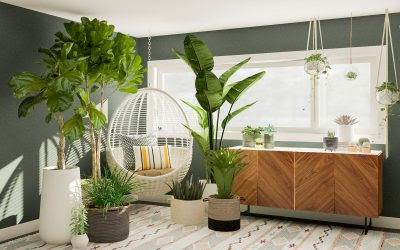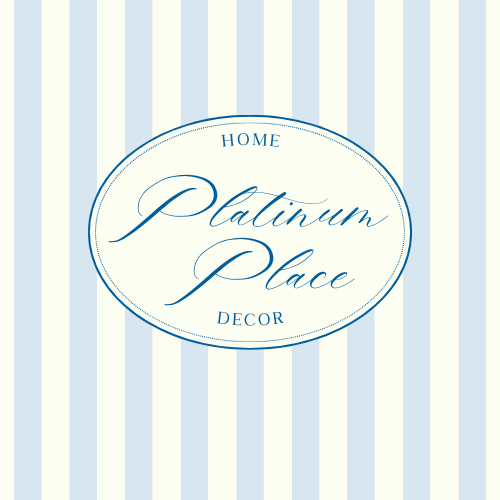Artificial Plants vs. Real: Why Faux Foliage Shines in Home Decor
GENERAL
Kelley Busbice
8/25/20254 min read


Artificial Plants vs. Real: Why Faux Foliage Shines in Home Decor
Plants are a cornerstone of home decor, bringing life, texture, and color to any space, from cozy living rooms to festive Valentine’s Day setups. Whether you’re aiming for a coastal chic vibe or a modern minimalist look, greenery is essential. But should you choose real plants or artificial ones? With trends favoring sustainability and low-maintenance solutions, artificial plants are stealing the spotlight. This article explores the pros of decorating with artificial plants compared to real ones, covering maintenance, cost, versatility, safety, durability, and adaptability. We’ll help you decide if faux foliage is the best fit for your home, whether you’re styling a year-round centerpiece or an outdoor patio.
The Evolution of Artificial Plants
Gone are the days of plastic, dusty artificial plants. Today’s faux greenery, crafted from high-quality silk, polyester, and advanced plastics, mimics real plants with stunning realism. From lush monstera leaves to delicate eucalyptus sprigs, these replicas are nearly indistinguishable from their living counterparts. Today, artificial plants are a top choice for busy households, urban dwellers, and decor enthusiasts seeking style without stress. But what makes them stand out against real plants? Let’s dive into the key advantages.
Pro #1: Zero Maintenance, Maximum Beauty
The standout benefit of artificial plants is their low-maintenance nature. Real plants require consistent care—watering, pruning, fertilizing, and pest control. Miss a watering, and your fiddle leaf fig wilts; overwater, and root rot sets in. Real plants also demand specific light, humidity, and temperature conditions, which can be challenging in homes with dim corners or fluctuating climates.
Artificial plants, by contrast, need no upkeep. No watering, no sunlight, no repotting—just occasional dusting with a damp cloth or a quick blow-dry on a cool setting keeps them vibrant. This makes them ideal for busy professionals, frequent travelers, or anyone lacking a green thumb. Place a faux fern in a bathroom or a cactus in a windowless office, and it stays lush forever, delivering beauty without effort.
Pro #2: Cost-Effective Over Time
Real plants may seem affordable initially—a small potted plant costs $10-30 at a nursery—but ongoing expenses add up. Soil, fertilizers, pots, and pest control can cost $50-100 per plant annually, especially for finicky species like orchids. If a plant dies, you’re back to square one, spending more to replace it. Maintaining indoor plants can become a costly commitment, particularly in urban settings with limited gardening resources.
Artificial plants are a one-time purchase. A high-quality faux monstera costs $30-100, but it lasts indefinitely with no additional expenses. Retailers like Amazon offer realistic 5-foot artificial trees for $50-150 and tabletop plants for $10-40. Over five years, a $50 faux plant beats the $250+ spent on maintaining a real one. This affordability makes artificial plants a smart choice for budget-conscious decorators looking for long-term value.
Pro #3: Unmatched Versatility in Placement and Design
Real plants are picky about their environment. Low-light areas, drafty hallways, or dry rooms can kill even hardy species, limiting where you can place them. This restricts your decor vision, forcing compromises. Artificial plants face no such limitations. Want a lush fern in a dim corner or a palm in a basement? Faux plants thrive anywhere.
They also offer design flexibility. Available in every shape and size—from cascading ivy to sculptural agaves—artificial plants suit any aesthetic, like coastal vintage or modern bohemian. You can bend stems or trim leaves without damage, customizing them for centerpieces, shelves, or wall hangings. This versatility lets you create cohesive looks across your home, from a minimalist bedroom to a vibrant dining room, without worrying about plant survival.
Pro #4: Allergy-Friendly and Pet-Safe
Real plants can pose health risks. Pollen-producing plants like lilies trigger allergies, while species like pothos or dieffenbachia are toxic to pets if ingested. Soil can also harbor mold, a concern for sensitive households. Artificial plants eliminate these issues. They’re pollen-free, non-toxic, and mold-resistant, making them safe for families, pet owners, and allergy sufferers.
This safety is a major draw for households with kids or pets, ensuring decor enhances your space without compromising health. A faux succulent on a coffee table or a fake palm in a living room offers peace of mind alongside style.
Pro #5: Durability for Indoor and Outdoor Use
Artificial plants excel in durability, especially for outdoor decor, a growing trend as patios become extended living spaces. Real plants outdoors face challenges—sun fades leaves, rain drowns roots, and frost kills tender species. Faux plants, particularly those designed for outdoor use, are crafted with UV-resistant materials to prevent fading and weatherproof fabrics to withstand rain. Retailers like World Market offer outdoor faux ferns and palms for $20-100, ensuring year-round vibrancy.
Unlike real plants, which require seasonal swaps or winter storage, artificial ones stay lush through storms or heatwaves. This makes them perfect for urban balconies or harsh climates, adding greenery without maintenance.
Pro #6: Seasonal Adaptability and Consistency
Real plants change with seasons—shedding leaves, blooming unpredictably, or going dormant—which can disrupt your decor’s consistency. Artificial plants offer unwavering beauty, maintaining their look year-round. You can also adapt them seasonally without replanting—add red berries for winter holidays or pastel blooms for spring.
This adaptability ensures your decor stays fresh and cohesive, whether you’re styling a Valentine’s Day centerpiece with faux eucalyptus or a summer patio with artificial palms. Their consistent appearance makes them a reliable choice for long-term decor plans.
Addressing the Downsides
Artificial plants lack the air-purifying benefits of real plants, which can improve indoor air quality. They also don’t grow or evolve, missing the organic charm of living greenery. However, high-quality faux options are so realistic that the aesthetic trade-off is minimal. Plus, their sustainability—reducing water and resource use—aligns with eco-conscious trends, making them a green choice in their own way.
Estimated Costs and Where to Shop
Costs for artificial plants vary by size and quality:
Small tabletop plants: $10-30 (e.g., faux succulents from Amazon).
Medium potted plants: $30-80 (e.g., faux fiddle leaf figs from Wayfair).
Large floor plants: $80-200 (e.g., 6-foot artificial palms from Target).
Outdoor faux plants: $20-100 (e.g., UV-resistant ferns from World Market).
Compare this to real plants: $10-50 initially, plus $50-100/year in maintenance. Shop budget retailers like Amazon, Walmart, or Dollar Tree for affordable options, or splurge on premium brands like Pottery Barn ($50-300) for hyper-realistic designs.
Final Thoughts
Artificial plants offer compelling advantages for home decor: zero maintenance, cost-effectiveness, versatility, safety, durability, and seasonal adaptability. They’re perfect for busy decorators, pet owners, or those with outdoor spaces, fitting seamlessly into any aesthetic from cozy bedrooms to vibrant patios. While real plants have their charm, faux foliage delivers style without stress, making it a top choice for modern homes. Ready to embrace faux greenery?
Trends
Explore luxury home decor trends and guides.
info@platinumplacehomedecor.com
© 2025. All rights reserved.


